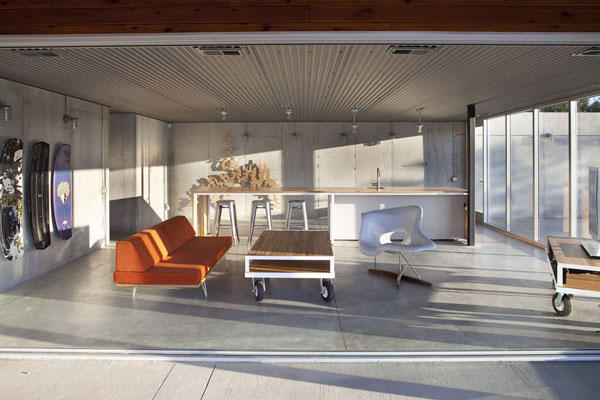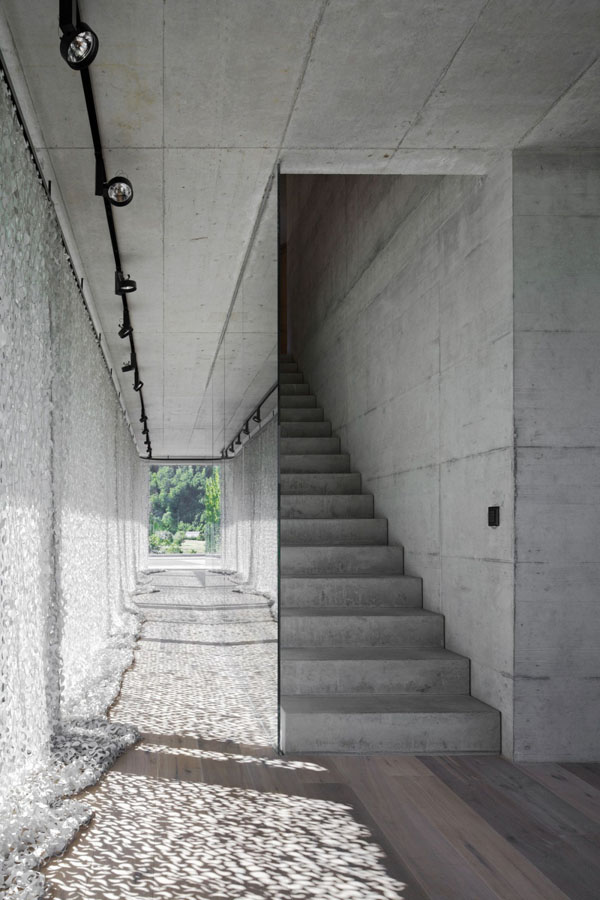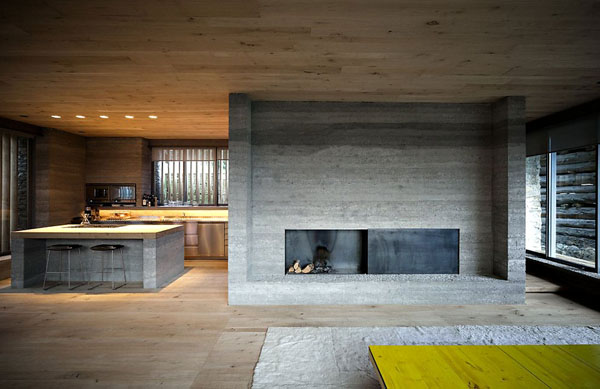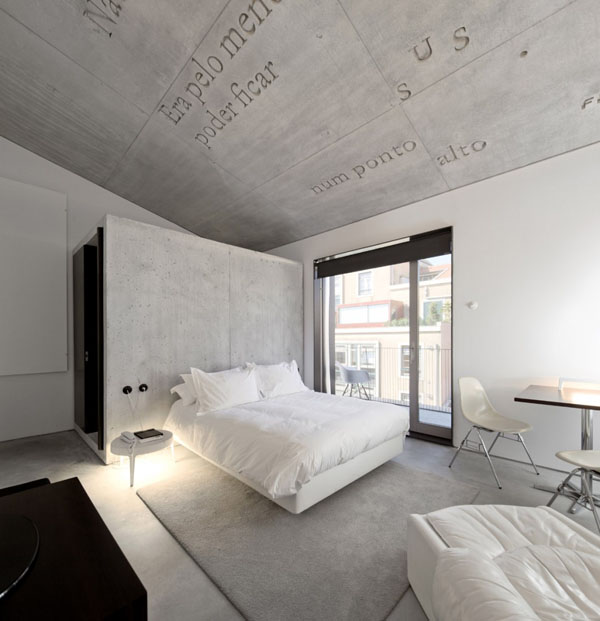Concrete elements such as walls, kitchen islands, ceilings and so on can create a stunning urban industrial look in your home. Versatile and minimalist in appearance, concrete is used by architects and designers to accentuating the beauty of their works or create new things altogether. The design language spoken by concrete is one of modernity, accessibility and progress, so why not consider it a material you would proudly display in your modern crib?
Writings on the wall have become part of our homes for quite some time now. But a concrete ceiling with low relief carvings can bring back the glamor of an old building and extend its influence onto the future. By transforming a 19th-century bourgeois home into a boutique hotel – Casa do Condo (House of Tales) – Portuguese studio Pedra Liquida imagined a concrete world where the past and the present intertwine to shape a stunning hospitality establishment in the center of Portuguese city of Porto. Each of the six hotel room “tales” was imagined by a different artist, narrating the changes undergone over time by this particular house.
Kissed by natural sunlight, the living room displayed by the Postcard House is dressed in concrete walls that break the monotony of aluminum and Western Red Cedar used throughout the home. Designed by Kansas City-based studio Hufft Projects, this highly contemporary interior captures views of the surroundings and draws them inside to warm up the space.


An apartment in Kiev designed by Ukrainian architecture studio 2B Group showcases concrete in a creative way. Function meets design in a vertical display – a customized concrete wine rack that creates a visual break between the living room and the kitchen. Textures and colors intertwine to create a highly contemporary setting for a modern lifestyle.


House D in Switzerland exemplifies a creative method of adjoining a tough material like concrete with breezy materials. HHF Architects created this modern home that proves materials, colors and textures can alter the atmosphere. Even if concrete is viewed as a cold material, using it properly can create a bold, elegant interior and exterior design.


The last example of concrete interior design shows the work of Ruinelli Associati Architetti on a remodeled barn in Soglio, Switzerland. Concrete walls and details compose a warm environment when backed up by carefully placed wooden elements. The warmth of a wooden ceiling creates a feeling of belonging, while a concrete wall supporting the fireplace and the concrete kitchen island bring the design to the 21st century industrial trend.
How would you combine concrete elements in your home?




